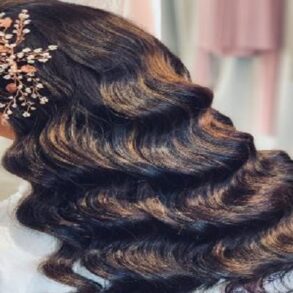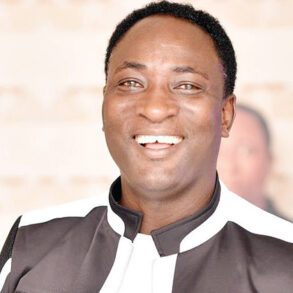When Sarah Waiswa returned to Kenya in 2010 after nearly a decade abroad, she was struck by how much had changed for women. More women were expressing their views and talking about their experiences. A number were redefining what an “African identity” meant to them.
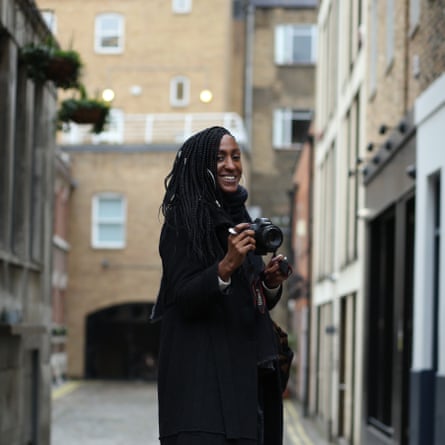
The narrow expectations of women across society were being questioned.
After so many years in the United States, Ugandan-born Waiswa says she took up photography as a way to reconnect with this changed continent. She had always loved photographs, pouring through family albums for hours, intrigued by changes in her family, their style and times. She was working in the corporate world, but as her pictures gained interest, what started as a hobby morphed into a career.
“The internet democratised photography – it made it easier for people to self-publish and this helped shift the narrative, because people are able to tell stories about themselves and their communities,” says Waiswa.
Using visual contrasts for social commentary is a feature of her work. In her photo series on albinism, she uses dreamlike images to illustrate the persecution and exclusion people face, while her photographs of ballet in Kibera shows dancers from the Nairobi slum practising an art commonly associated with privilege and wealth.
She brings this technique to a new exhibition she has curated for the Goethe Institute in Nairobi.
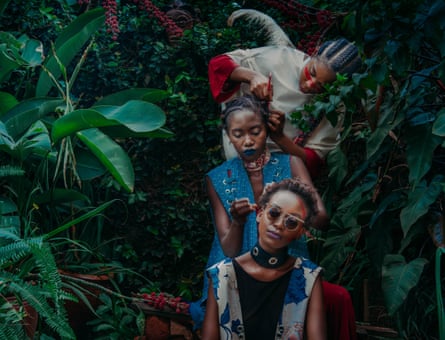



Modern east African women are juxtaposed with images from colonial times, to document change over the past few decades. The exhibition also features visual works by 12 female photographers from Kenya, Uganda, Somalia, Ethiopia, Tanzania and Rwanda.
Using portraiture and documentary photojournalism, the images depict African womanhood through themes of identity, empowerment and fragility, and the modern versus traditional.
The photos highlight how viewpoints affect storytelling. Old images taken by white, mainly male photographers offer a glimpse into the prevailing colonial attitudes and stereotypes of women at the time. Archival photos, for instance, include images of topless women in loincloths.
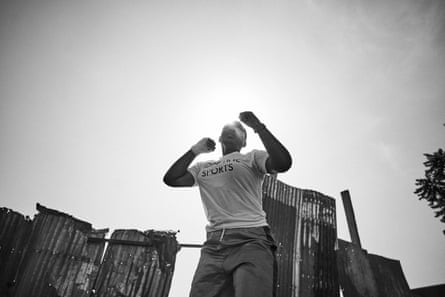



“It’s as if they were being photographed to be categorised, to be catalogued,” says Waiswa. “The images were used for ethnic and anthropological studies, to maintain racial hierarchies and justify the colonial presence by painting the idea that Africans were primitive and helpless.”
Some images show women in training centres, acquiring skills that aligned with colonial goals of “modernising” and “civilising” locals, while later photos show accomplishments, such as Agatha Mboje, the first Kenyan woman to get a university degree, in the 1950s, and Lydia Anukowa, the first Kenyan woman to train as an air hostess, in 1962.
![An African woman wearing a black veil, from the series Hair and Melanin, by Margaret Njeri Ngigi. She saysthe series is about the enduring and detrimental impact of colourism on black women, and is ‘an ode to black skin girls put to shame, and [who are] robbed of happiness and joy because of the colour of their skin and the texture of their hair’.](https://hoodoverhollywood.news/wp-content/uploads/2023/10/6843.jpg)
![An African woman wearing a black veil, from the series Hair and Melanin, by Margaret Njeri Ngigi. She saysthe series is about the enduring and detrimental impact of colourism on black women, and is ‘an ode to black skin girls put to shame, and [who are] robbed of happiness and joy because of the colour of their skin and the texture of their hair’.](https://hoodoverhollywood.news/wp-content/uploads/2023/10/6843.jpg)
![An African woman wearing a black veil, from the series Hair and Melanin, by Margaret Njeri Ngigi. She saysthe series is about the enduring and detrimental impact of colourism on black women, and is ‘an ode to black skin girls put to shame, and [who are] robbed of happiness and joy because of the colour of their skin and the texture of their hair’.](https://hoodoverhollywood.news/wp-content/uploads/2023/10/6843.jpg)
![An African woman wearing a black veil, from the series Hair and Melanin, by Margaret Njeri Ngigi. She saysthe series is about the enduring and detrimental impact of colourism on black women, and is ‘an ode to black skin girls put to shame, and [who are] robbed of happiness and joy because of the colour of their skin and the texture of their hair’.](https://hoodoverhollywood.news/wp-content/uploads/2023/10/6843.jpg)
The recent works aim to centre and depict women’s agency and identity, and their ongoing struggles.
Kenyan photographer Thandiwe Muriu uses hairstyles and colourful fabrics that make women simultaneously blend into and stand out of the image to highlight womanhood and culture.
Photographer Fadumo Mohamoud Ali shows women in moments of ease and abandon in their everyday lives – rare images in prevailing media coverage of Somalia.
Kenyan photographer Mumbi Muturi illustrates the weight of her grief as she mourned her mother with soft and vulnerable imagery that challenges common, linear equivalences of black womanhood with relentless strength.
Works by the Tanzanian photographer Neema Ngelime pay visual tribute to women’s paid and unpaid labour, while Ugandan non-binary artist DeLovie Kwagala uses documentary photography to show the transgender experience through family relationships.
The exhibition, titled Sisi ni Hao – which in Swahili means both “we are them” and “we are here” – gives a collective nod to women’s shared history. “If you can’t see [those images], you can’t engage with that history,” says Waiswa.
Colonial images of Africans have been relegated to the archives due to a sense that they are either unrelatable or inaccessible, says Waiswa. However, the impact of photographic history on public perceptions still need to be reckoned with.
Racial hierarchies are still evident in coverage of Africa, she says. Media outlets still display dead black or brown bodies during coverage of war or terrorism, but rarely white ones, for instance, a subject of criticism in recent years.
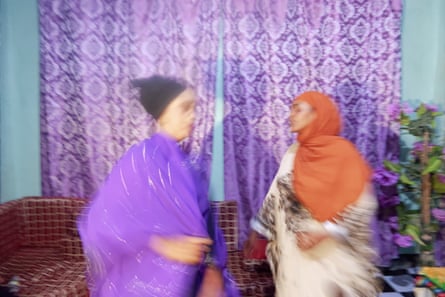



“Things have changed … but you’re fighting against a system that began in an oppressive and violent way and changing that takes time,” she says.
When she took up a camera in 2015, there were few or no centralised databases for African female photographers. In 2021, Waiswa created African Women in Photography to publish and exhibit their work, provide them with a space to engage and collaborate, and to connect with training and funding opportunities.




Waiswa would like to eventually open a resource centre.
“When other people have told your stories for so long and represented you in a certain way, it’s even more important for us to give our own perspectives – a more nuanced view of what women’s lives and experiences are like on the continent,” she says. “We need to reclaim the narrative.”
Sisi ni Hao runs until 10 November at Goethe-Institut, Nairobi
This post was originally published on this site be sure to check out more of their content.





